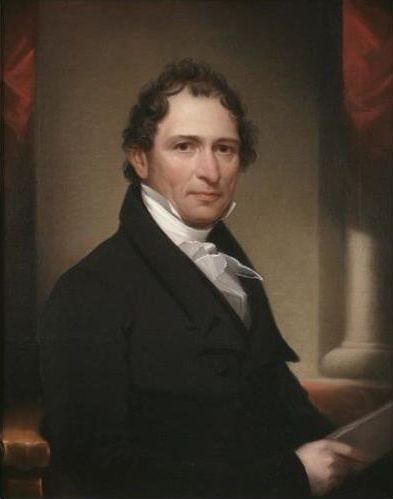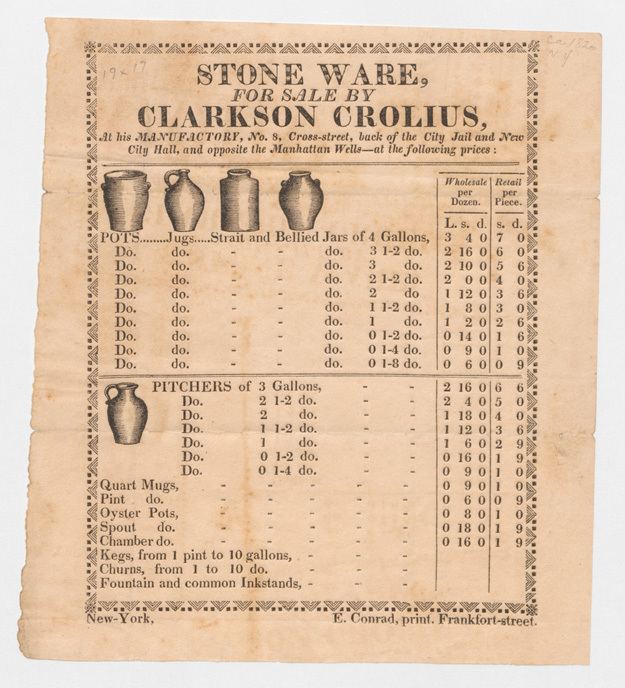Name Clarkson Crolius | Died October 5, 1843 | |
 | ||
Clarkson Crolius (Manhattan, New York) Stoneware, circa 1810s
Clarkson Crolius (bapt. October 30, 1774 New York City – October 5, 1843) was an American businessman and politician.
Contents
- Clarkson Crolius Manhattan New York Stoneware circa 1810s
- Clarkson Crolius New York City Stoneware Pottery Pitcher circa 1810
- Life
- References

Clarkson Crolius, New York City, Stoneware Pottery Pitcher, circa 1810
Life
He was the son of Johannes (John) Crolius and Maria Clarkson Crolius. His grandfather Johan Willem (William) Crolius, a manufacturer of stoneware, is said to have come from Germany to New York City, and ran a pottery on Reade Street, near Broadway. William's son John Crolius acquired property on Reade Street, about one hundred feet west of Centre, where the pottery and the family residence were maintained for many years, until Clarkson Crolius removed the works to No. 65 and 67 Bayard Street, the home still remaining in Reade Street.
In 1811, as Grand Sachem of the Tammany Society, he laid the foundation stone of the old Tammany Hall in Frankfort Street.
At the beginning of the War of 1812, he was a major in the Twenty-seventh Regiment of the State Militia, but resigned his commission and received an appointment to the same rank in the regular service. He finished the war as a colonel.
He was an alderman of New York City for many years. He was a member from New York County of the New York State Assembly in 1806, 1807, from 1816 to 1822, in 1824 and 1825, and was Speaker in 1825.
In 1830, he was one of the incorporators of the Canajoharie and Catskill Railroad.
In 1831, he was the leader of the National Republican Party in New York City.
He married Elizabeth Meyer (ca. 1774–1856). Their son, State Senator Clarkson Crolius (b. 1801), discontinued the manufacture of stoneware in Bayard Street in 1845, and the pottery was afterwards demolished.
